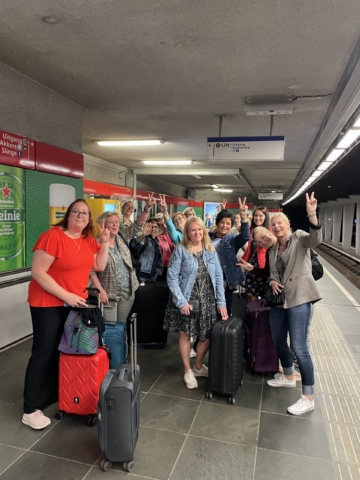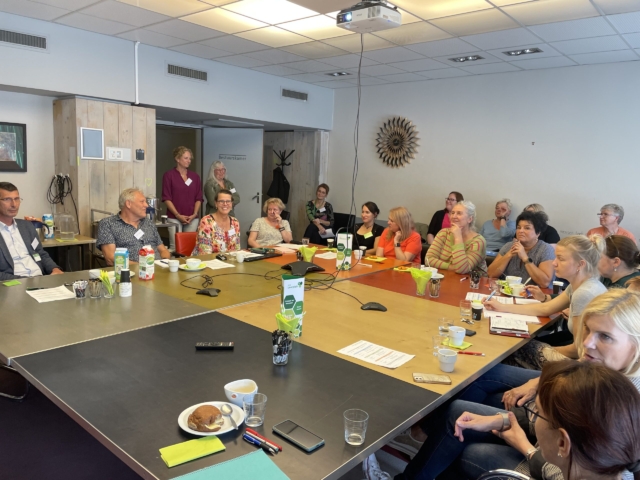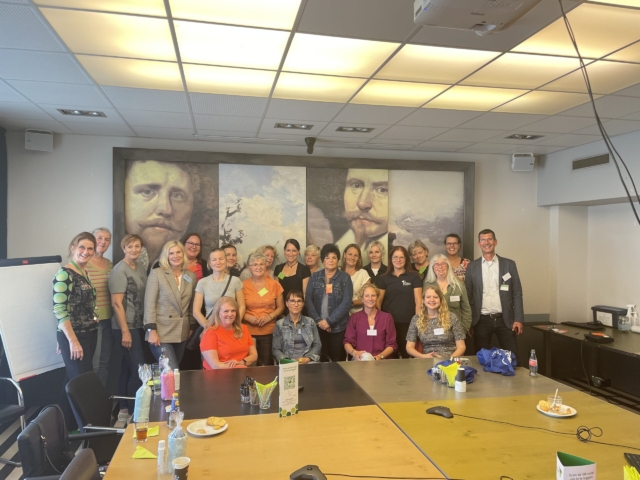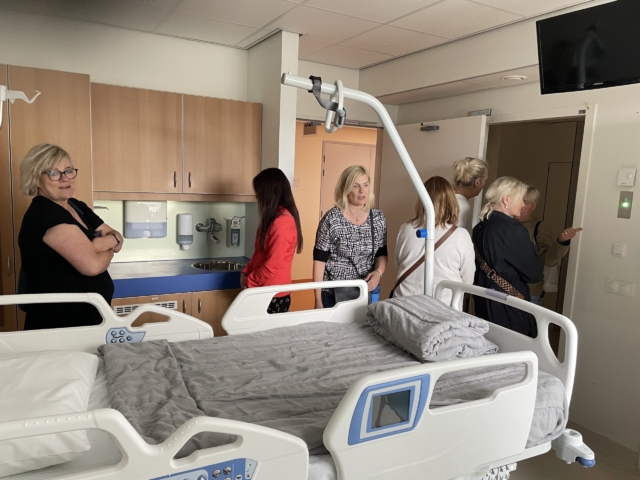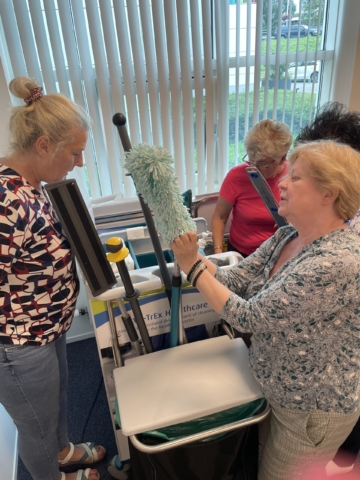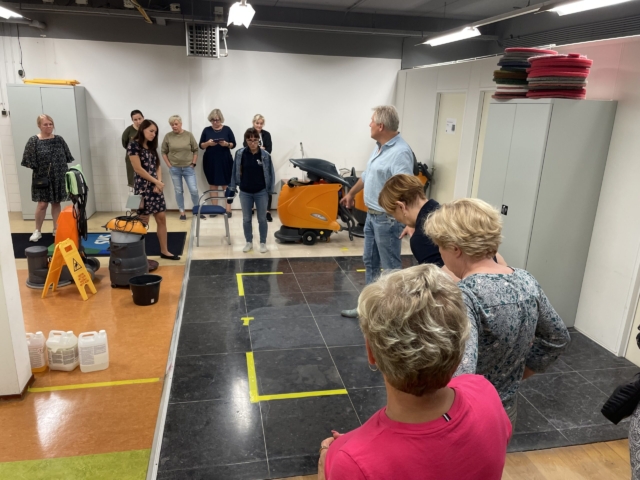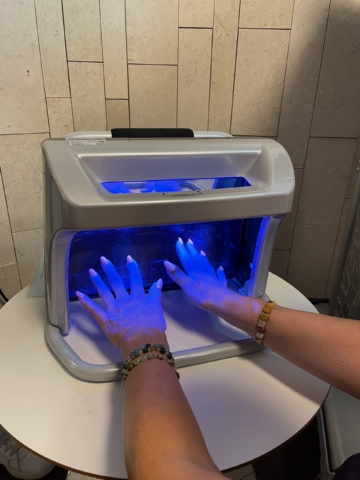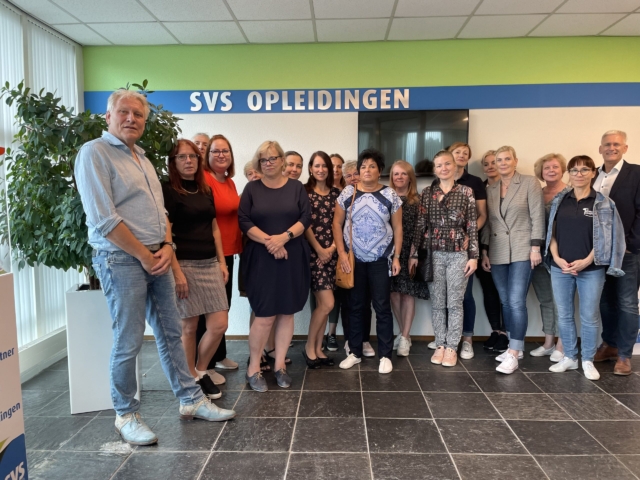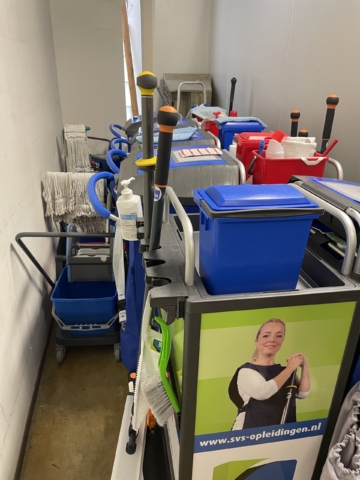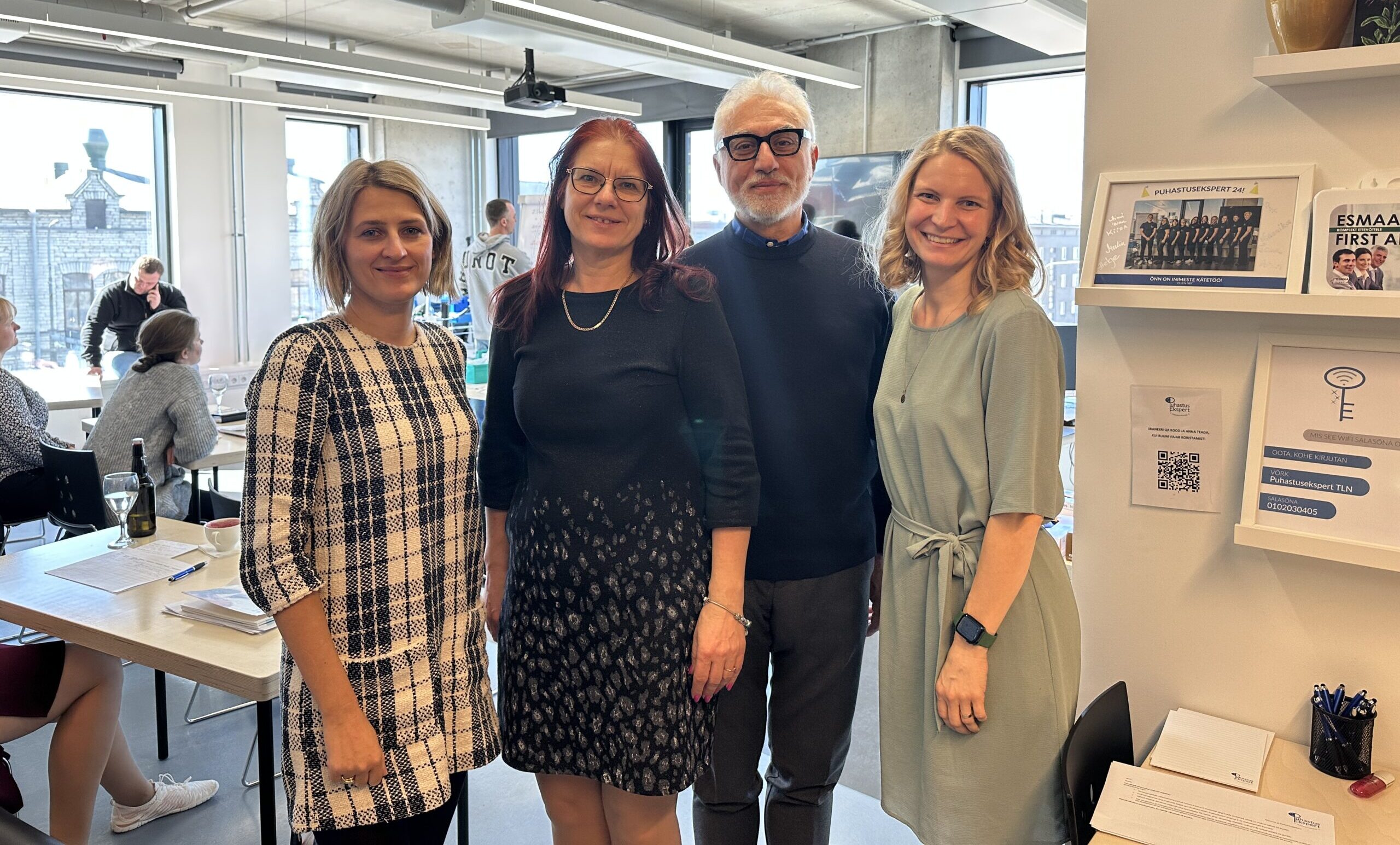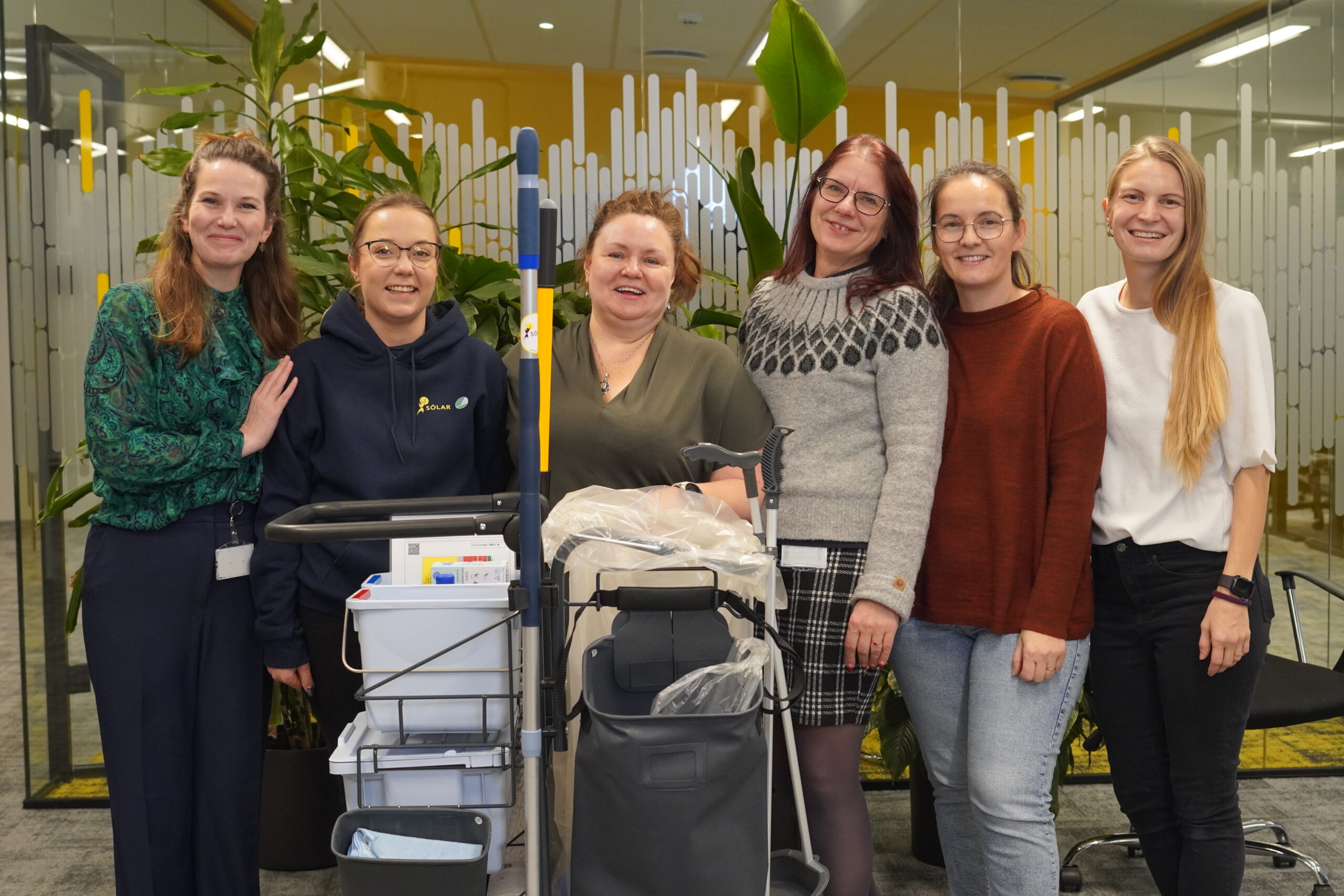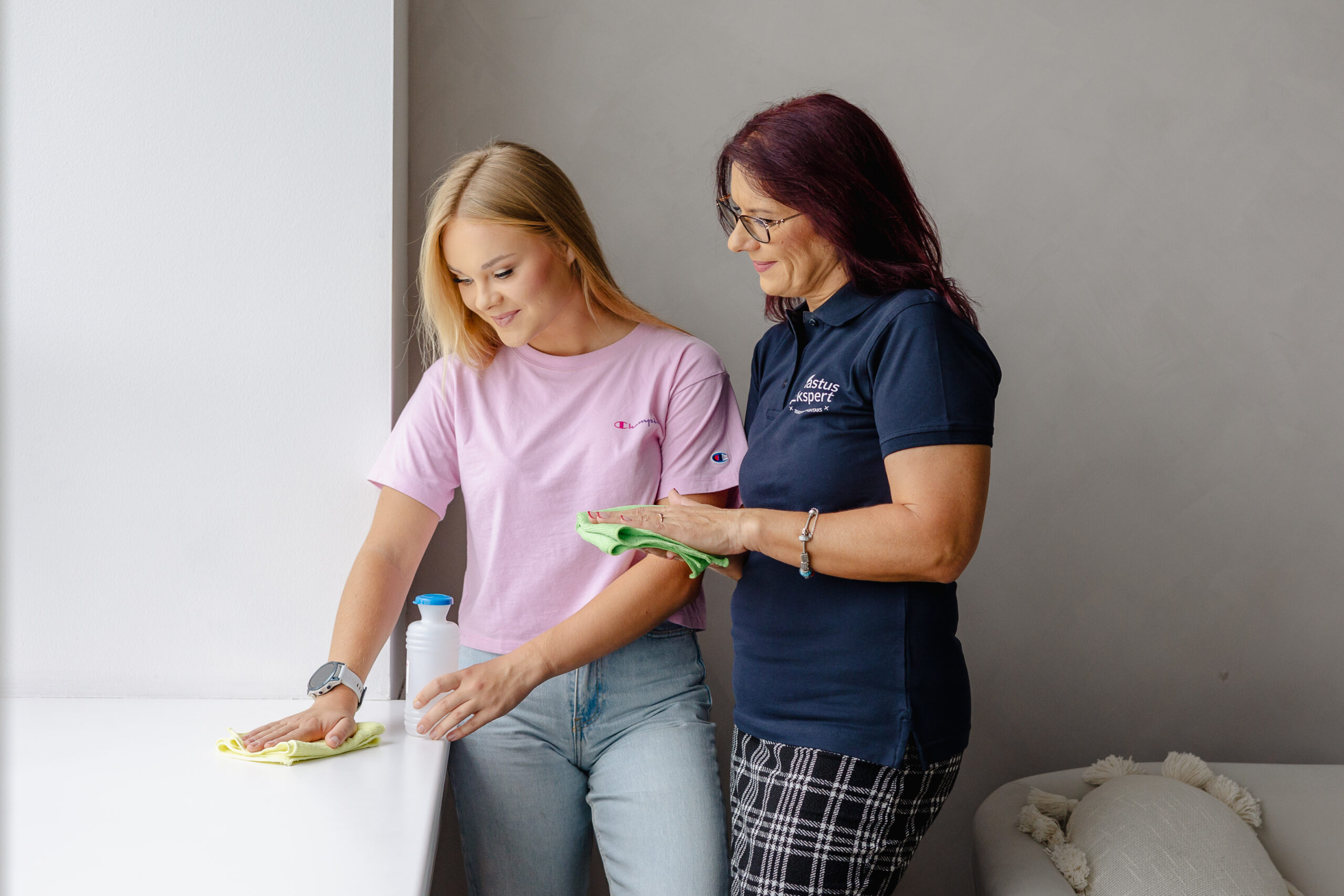Courses and trainings in the Netherlands from 28 to 31 August 2023
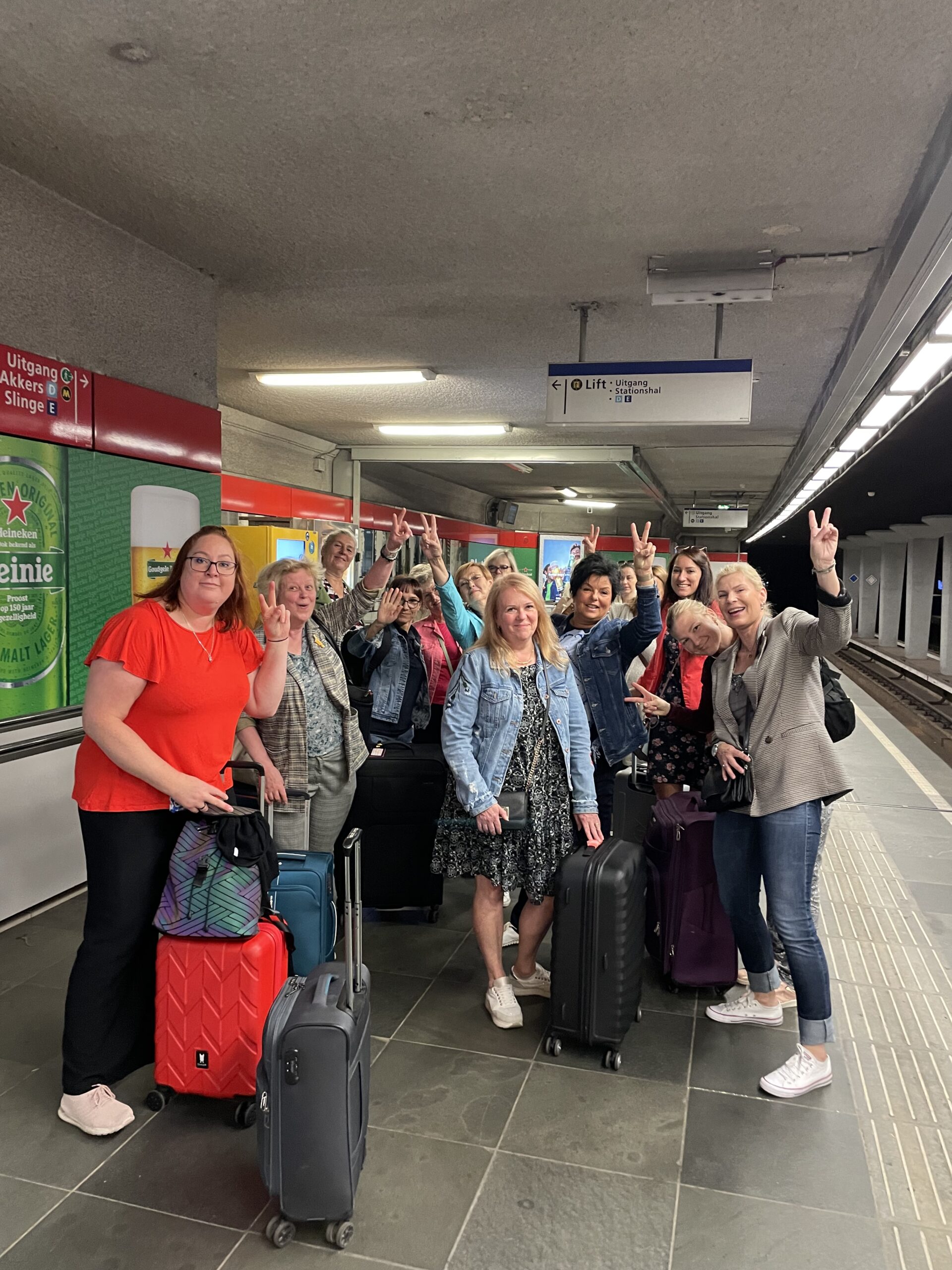

In the last week of August 2023 Puhastusekspert led an Erasmus + courses and trainings trip to the Netherlands. Representatives of consortium members Tartu University Hospital, Rakvere Hospital, North Estonia Medical Centre, Valga Hospital, OÜ SOL Baltics, Arkaadia Puhastuse OÜ, P.Dussmann OÜ and Puhastusekspert OÜ took part in the courses and trainings trip, a total of 17 people.
The Dutch instructors were Kristel Rietveldt from Gouda Hospital and Jaap Niezen from SVS.
One of the main objectives of the courses and trainings trip was to learn from the Dutch experience whether and how it is possible to ensure adequate cleanliness and patient safety in a hospital environment by using microfibre cloths and mops moistened with water for cleaning.
Gouda Hospital has been cleaning with wet cloths since 2008. Disinfectants are only used for the removal of bodily fluids and for insulation. A neutral cleaning chemical is used daily in toilets and washrooms, as well as an acidic chemical once a week in toilets and an alkaline chemical in washrooms. The hospital implements systematic monitoring of the cleanliness results as well as the process. They use visual assessment and ATP tests to identify organic soiling and microbiological sampling. The experience of Gouda Hospital shows that deliberate cleaning with water and microfibre cloths is safe and sufficient in the hospital environment, as the infection rates in this hospital were lower than the average in the Netherlands (indicating better results).
In 2011, the hospital switched to cleaning medical devices using disposable microfibre cloths moistened only with water. Continuous monitoring also shows good results in this respect.
In addition to visiting Gouda Hospital, we studied at the SVS training centre in Rotterdam and a hospital in Amsterdam. It is interesting to note that the cleaning performance monitoring systems and standards applied in both hospitals are similar to the standards used in Estonia and Scandinavia, INSTA800 or EVS914:2020 “System for establishing and assessing cleaning quality” and EVS944:2023 “Requirements for cleaning in health care institutions”.
Our group was very happy and eager to learn. During the 3-day training course, we gained an incredible amount of experience and new insight and ideas that will help to consciously create cleanliness in the hospital environment and help to prevent the spread of hospital infections.
Our highlights:
- Consistent and systematic supervision of results and activities and drawing conclusions from them is essential to achieve sufficient cleanliness.
- Specific training system for cleaners – Dutch hospital cleaners have to undergo two 7-day training sessions during their first 6 months of employment, one on cleaning technologies, the other on the specificities of the hospital environment
- With the right level of moistening and controlled cloth movement, water and microfibres make for a very powerful tool, capable of removing 99.9% of microbial debris. These are the numbers we were shown by a representative from the infection control department at Gouda Hospital.
- Conscious work requires fewer disinfectants and other chemicals.
- Proper preparation and use of manual cleaning equipment, trolleys and textiles is the prerequisite for getting good results.
- One of the biggest enemies in the hospital environment is dust, which microorganisms love to feast on. Daily dust removal was a priority in Dutch hospitals.
- Hospital wards and similar rooms were cleaned without gloves, but there were strict rules for disinfecting hands – every time after touching a trolley or similar equipment. Their experience shows that this results in fewer infections transmitted by hands and reduced waste from disposable gloves.
- Cleaning rooms had a clearly defined clean and unclean side to prevent the contamination of manual cleaning equipment and cloths.
- Cleanliness in a hospital environment is the sum of several different factors. If any single link in the chain is lacking, it causes a domino effect, which means that microorganisms can escape and cause hospital infections. It is important to see the big picture and monitor all aspects.


